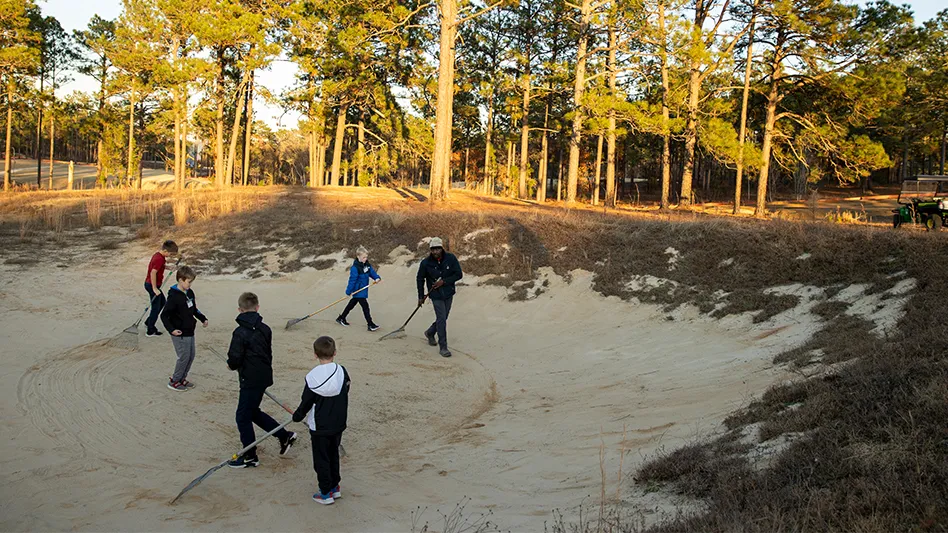 Jeffrey D. Brauer Jeffrey D. Brauer |
At GIS in Orlando, I was asked how to move from master plan to actual construction. Some wonder if there are “secrets” to taking the plan’s concept to real construction that benefits the golf course. I asked my fellow ASGCA architects to share their experiences in actually getting started on improvements. While experiences differ, a couple of themes emerged.
Money in place
Money is an obvious issue, and if you don’t got it… you just don’t got it. Include a fundraising/financial component in phase one. Tom Marzolf, senior designer with Tom Fazio, says his clients usually start on projects quickly, but his client list includes many upper-end clubs which have been less affected by the recession. He breaks down the plan into pieces, rather than spending millions right off the bat. “Spending a lot,” he says, “benefits architects and contractors, but spending a little benefits the clubs, so we fashion our renovation programs that way.”
Friends in high places
John La Foy, an ASGCA member from Greenville, S.C., says a “project flag bearer” is essential to success, which mirrors my experience. Renovations are more likely to happen if initiated by a club president, long-range planning or greens committee chairman with tenure at the club, and less likely if initiated by the GM, pro or super or new club members. In other words, the movers and shakers must be in favor of the project.
“Remember the Alamo!”
The leaders have to “sell” to others why the project is necessary, like politicians building a case for major new initiatives. It helps to have a succinct, easily identifiable rallying cry. “Better bunkers now and faster greens forever!” often works. “I want it dry,” can sell a drainage program, presuming all know it’s not a call for a better martini. Vague (“I don’t like the 15th hole.”) or limited member-specific problems (“I can’t hit my ‘running beauty duck hook’ on the 7th.”) are less likely to get funding.
Meat on the bone
The easiest projects also have a decent cost-to-benefit ratio to back up the rally cry, especially for less “sexy” projects. If your course takes in $4,000 per day, but poor drainage costs you 25 play days annually, new drainage might increase revenues more than $100,000 a year for about that same one-time build cost. Starting year two, it’s a net positive to cash flow and may also save on labor to rope off high-traffic areas.
No doubt!
Roger Rulewich, an ASGCA member in Bernardston, Mass., notes his master plans increasingly include more detailed cost estimates than before. He now prepares preliminary grading plans and other detailed work. Basing estimates on detail planning is far more persuasive than saying, “On our last project, we spent about $XXX.”
Fear of spending money is compounded by fear of spending far more than budgeted. In many cases, architects are now bringing in contractors for a preliminary budget view to further establish budget credibility.
Rick Phelps of Evergreen, Colo., and ASGCA’s new president, increases “certainty” by presenting proposals in 3D views, rather than traditional plan-view graphics. Golfers don’t really understand plans, but they do understand computer generated before and after images of proposed changes from the golfers viewpoints.
Phelps says his clients often say “Wow, our course can look like that?” and eagerly adopt the proposed project.
Doubt equals fear, and fear equals inertia. Too many master plans skip the most basic questions: Why is this necessary, what will it cost and how will it benefit us?
The pretty pictures are nice, but when money is tight, who funds the arts?
|
 Jeffrey D. Brauer
Jeffrey D. Brauer 





